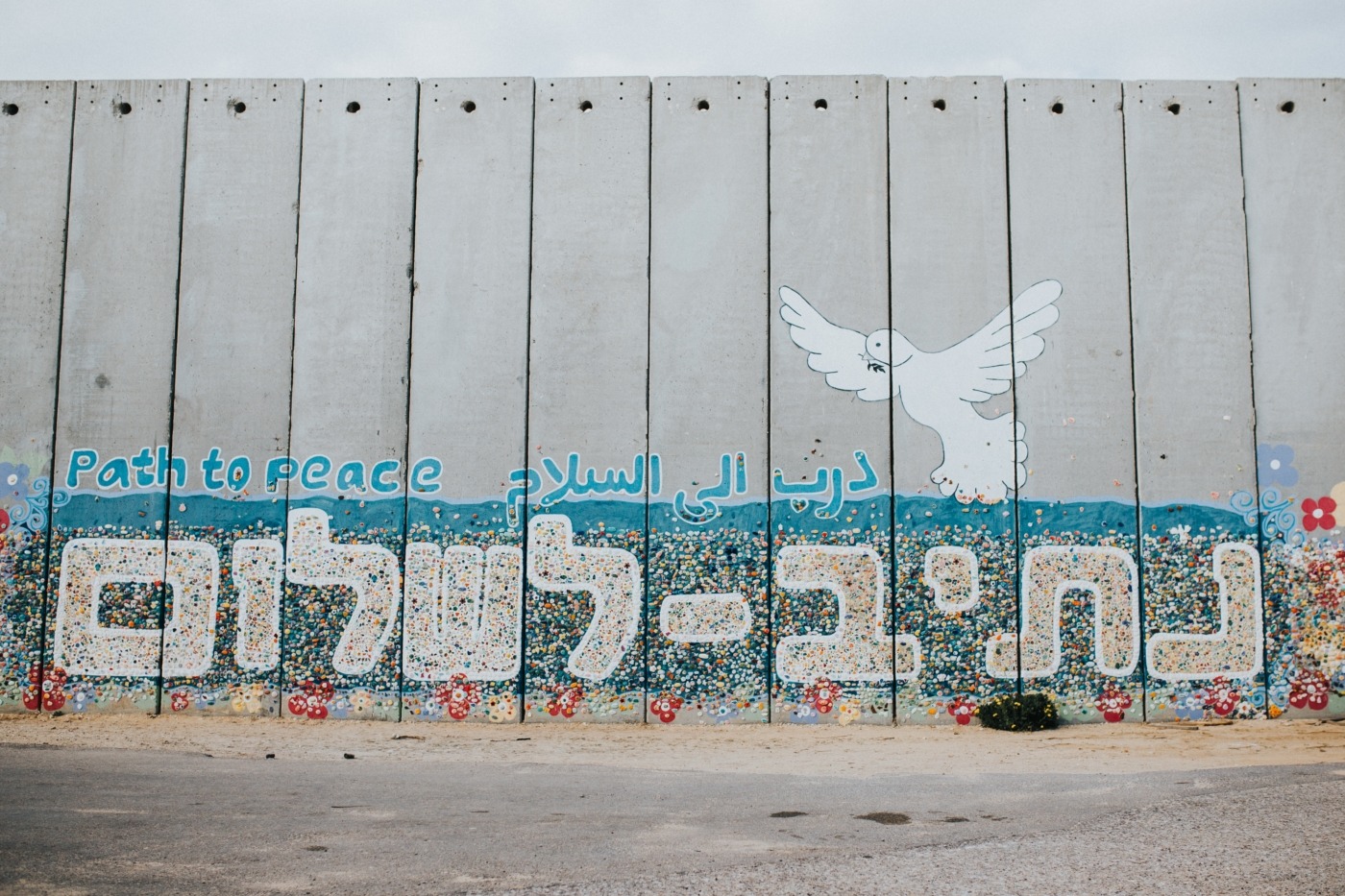The importance of political art in the Middle East
In December, Banksy’s artwork on a wall in Birmingham’s Jewellery Quarter calling attention to homelessness at Christmas time hit headlines and was for a while the hot topic of conversation on social media.
Artists all over the world use art to express political and social messages. However, in the UK we don’t often hear about the political work that is coming out of other regions of the world, which is created to protest against oppressive regimes, violence and social injustice.
The Middle East, in particular, has a vibrant and recently emerging tradition of protest art
The Middle East, in particular, has a vibrant and recently emerging tradition of protest art. Much of it focuses on the Palestinian conflict, with artists from all over the Middle East show their support with those being oppressed.
Art like this helped to build a sense of identity and national pride for people from and living in Israel
Sultan Sooud Al Qassemi, professor at Boston College, recently gave a talk in which he analysed how the national identity for Jews in Israel became linked to a growth in Israeli art. With the formation of the state of Israel in 1948, there was a boom in art produced related to Israel. In particular, Marcelo Janco’s ‘Death of a Soldier’ from 1949, depicted a group in mourning of the death of an Israeli soldier with the vision of Jerusalem in the background. Art like this helped to build a sense of identity and national pride for people from and living in Israel.
Palestinian artists have similarly turned to political art to express the repression and social injustices that they have experienced at the mercy of the state of Israel. Ismail Shammout was a Palestinian artist who painted ‘Where To?’ in 1953 which portrayed a displaced Palestinian family.
In response to a massacre of thousands of Palestinians in 1982 by a Christian militia group, Dia Azzawi painted ‘Sabra and Shatila’, named after the refugee camp. Much of the Palestinian art is painted in the Guernica style made famous by Picasso and known for exploring anti-war messages. This is interesting and shows how art has global connections and a global impact, with Middle Eastern artists adapting European art techniques.
Artists across the Middle East have utilised the rich culture of art to show solidarity with the Palestinian cause
Artists across the Middle East have utilised the rich culture of art to show solidarity with the Palestinian cause. Some Israeli artists have used art as a way to show their anger at the actions of the Israeli government. After an Israeli attack in 1956, Naftali Bezem painted ‘In the Courtyard of the Third Temple.’
Activists that have been imprisoned for their politics have used art while incarcerated to get their messages out. Inji Efflatoun was an Egyptian artist who was imprisoned for her activism and continued to paint in prison.
It is vital that audiences are aware of where the line between offensive hate speech and political expression lies
However, there is a difference between offensive art and political expression art. Some artists have been criticised for articulating anti-Semitic messages. Syrian artist Naim Ismail painted ‘Fedayeen’ in 1969 which depicted Palestinian freedom fighters, but was deemed anti-Semitic as the artist didn’t distinguish between Judaism and the state of Israel. It is important that audiences are critical of art in general but especially over such a controversial topic – it is vital that audiences are aware of where the line between offensive hate speech and political expression lies.
Middle Eastern art is not only produced over the Palestine conflict. Many artists have created pieces to protest against violence and imperialism in Algeria, with artists from Morocco to as far as France creating works to demonstrate anger at the impact of European colonialism in the region.
Political art is so powerful in the Middle East as many countries have strict laws regarding protest and experiences in the last century of massacres, imperialism, wars and conflict which provides a great deal of inspiration for art.
Art can be a form of relief and a way for them to articulate what may be unspeakable experiences
For people who have experienced violence and oppression, art can be a form of relief and a way for them to articulate what may be unspeakable experiences.
However, there are big issues with access to Middle Eastern political art, especially in Europe. Artists don’t always allow their work to be photographed which means that lots of pieces don’t survive and those that do are not kept to the best quality.
In response to the access issues with maintaining Middle Eastern art, Al Qassemi founded the Barjeel Art Foundation which aims to make modern Arab art more accessible for a wider audience. This is so important. It means that people all over the world can appreciate and be inspired by Middle Eastern artwork.
Art transgresses borders
Art transgresses borders. Its impact can be felt across the world, so it is so important that the vibrant culture of protest art in the Middle East is recognised by Europeans and Americans. The work of accessibility projects like the Barjeel Art Foundation is making the culture and lively political activism of the Middle East known worldwide.

Comments